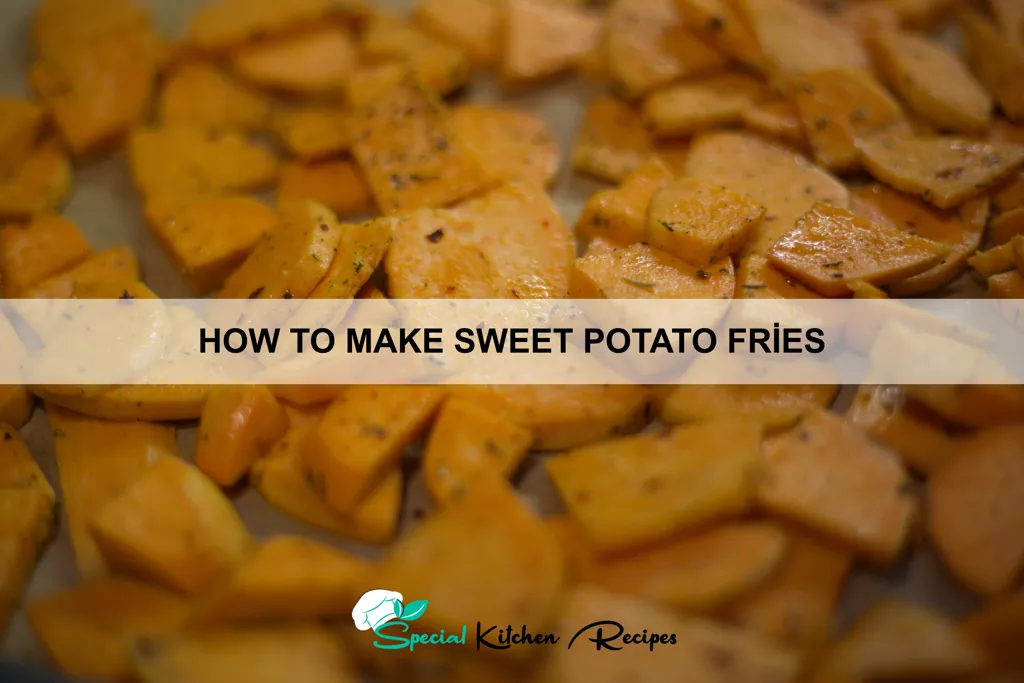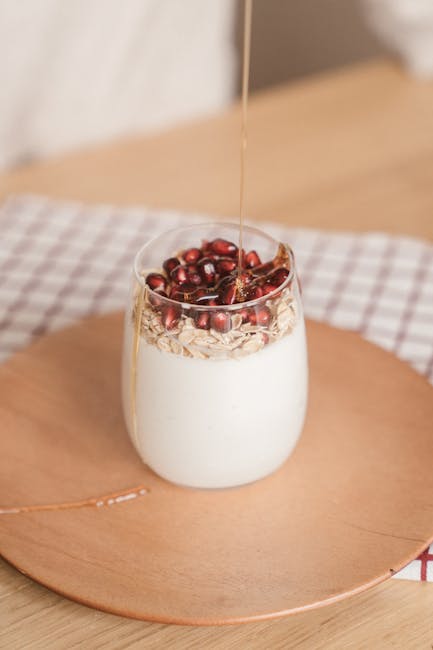Sweet potato fries, a beloved side dish enjoyed globally, boast a surprisingly rich history interwoven with culinary traditions across continents. While the precise origins are difficult to pinpoint, the use of sweet potatoes themselves dates back centuries. Indigenous populations of South America cultivated various sweet potato varieties long before European colonization, with evidence suggesting cultivation as early as 8,000 years ago. These early forms differed significantly from the sweet potatoes we know today, highlighting the plant’s adaptability and evolution through human cultivation. The transformation into the crispy, delectable fries we enjoy today is a more recent development, likely emerging in the mid-20th century alongside the rise of the ubiquitous potato fry.
The popularity of sweet potato fries exploded in recent decades, fueled by increasing awareness of their nutritional benefits. Compared to traditional potato fries, sweet potato fries are significantly richer in vitamins A and C, as well as fiber and antioxidants. This nutritional advantage, coupled with their naturally sweet flavor, has made them a popular choice for health-conscious consumers. In fact, market research indicates a substantial and sustained growth in the demand for sweet potato fries in both the restaurant and retail sectors. While exact figures vary by region, some estimates suggest an annual growth rate exceeding 5% in certain markets. This surge in popularity reflects a broader trend towards healthier eating habits and a willingness to explore alternative, nutrient-dense options.
Beyond the nutritional aspect, sweet potato fries hold cultural significance in various regions. In many parts of the Caribbean and parts of Africa, sweet potatoes are a staple crop, integral to traditional dishes and cultural celebrations. Sweet potato fries, therefore, represent a modern adaptation of a deeply rooted agricultural heritage. The versatility of the sweet potato is also key to its global appeal; it can be prepared in countless ways, from simple roasting to more elaborate dishes, reflecting the diverse culinary landscapes it has become a part of. This recipe will guide you through a simple yet delicious method for making sweet potato fries at home, allowing you to enjoy this globally loved treat with ease.
Ingredients and Measurements
This recipe yields approximately 4 servings of delicious sweet potato fries. The quantities can be easily adjusted to suit your needs, simply multiply or divide accordingly. Accurate measurements are crucial for achieving the perfect texture and flavor.
Sweet Potatoes: You’ll need 2 large sweet potatoes (approximately 1 pound total). Choose sweet potatoes that are firm to the touch, free of bruises or soft spots. The variety of sweet potato isn’t overly critical, but consider using a variety known for its drier flesh, such as garnet yams, for crispier fries. If using smaller sweet potatoes, you may need to adjust the quantity slightly upwards.
Oil: We recommend using 1 cup of high-heat oil with a neutral flavor profile. Vegetable oil, canola oil, or avocado oil are excellent choices. Avoid using olive oil, as its low smoke point makes it unsuitable for high-temperature frying. The quantity of oil should be sufficient to fully submerge the sweet potato fries without overcrowding the pan. Overcrowding will lower the oil temperature and result in soggy fries.
Seasoning: The beauty of sweet potato fries lies in their versatility. This recipe uses a classic blend, but feel free to experiment! We’ll use 1 teaspoon of salt, 1/2 teaspoon of black pepper, 1/2 teaspoon of paprika, and 1/4 teaspoon of garlic powder. Adjust the seasoning to your preference. Consider adding other spices like cayenne pepper for a little heat, or cinnamon for a sweeter flavor profile. Freshly ground spices always deliver the best flavor.
Optional additions: For extra flavor and texture, consider incorporating 1 tablespoon of cornstarch or arrowroot powder to the fries before frying. This helps to create a crispier exterior. You can also add a sprinkle of your favorite herbs, such as rosemary or thyme, after frying for an extra aromatic touch. Remember to adjust the seasoning accordingly if adding other ingredients to maintain the desired flavor balance.
Preparation Note: Before beginning, ensure all your ingredients are at room temperature. This will help ensure even cooking. Cutting the sweet potatoes into uniform sizes is essential for even cooking; aim for fries that are approximately 1/2 inch thick and 3-4 inches long.
Equipment Needed
Making delicious sweet potato fries requires the right tools to ensure even cooking and optimal results. While you might be able to improvise with some items, having the correct equipment will significantly elevate your fry-making experience.
First and foremost, you’ll need a large baking sheet (approximately 18 x 13 inches or larger). This provides ample space for your fries to spread out in a single layer, crucial for even browning and crispiness. Crowding the fries will lead to steaming instead of frying, resulting in soggy fries. Consider using a baking sheet with a lip to prevent spills.
Next, a sharp knife is essential for cutting the sweet potatoes into uniform fries. Aim for fries that are roughly ½ inch thick and 3-4 inches long. Consistency in size ensures even cooking; unevenly sized fries will result in some being overcooked while others remain undercooked. A mandoline slicer can be a huge help here if you want perfectly uniform fries, but a sharp chef’s knife will suffice for most home cooks.
You’ll also need two large bowls. One bowl is for washing and preparing the sweet potatoes, while the second is for tossing the cut fries with oil and seasonings. Using separate bowls prevents cross-contamination and keeps your workspace organized.
A measuring cup and spoons are vital for accurate measurements of oil and seasonings. Using too much or too little oil can significantly impact the final result. Precise measurement of spices ensures consistent flavor.
Finally, kitchen tongs are highly recommended for turning the fries during baking. Using tongs allows for gentle handling of the fries, preventing breakage and ensuring even browning on all sides. A wire rack placed atop the baking sheet is also beneficial for extra crispiness, as it allows air to circulate underneath the fries.
Optional but helpful equipment: A food processor with a slicing attachment can quickly and efficiently cut sweet potatoes into uniform fries. A parchment paper liner for your baking sheet will make cleanup a breeze. A kitchen timer is essential to ensure you don’t overcook or undercook your fries.
In summary: The core equipment includes a large baking sheet, a sharp knife (or mandoline slicer), two large bowls, measuring cups and spoons, and kitchen tongs. Optional additions include a food processor, parchment paper, and a kitchen timer. Investing in these tools will significantly enhance your sweet potato fry-making process and yield consistently delicious results.
Preparation of Sweet Potatoes
Preparing sweet potatoes for fries is crucial for achieving perfectly crispy results. Start with selecting the right potatoes. Look for firm, smooth-skinned sweet potatoes without bruises or soft spots. Avoid overly large potatoes as they may not cook evenly. Aim for medium-sized sweet potatoes, approximately 6-8 inches long.
Wash the sweet potatoes thoroughly under cold running water, scrubbing away any dirt or debris. A vegetable brush is helpful for this step. Once clean, pat them completely dry with paper towels. This is vital; excess moisture will prevent the fries from crisping up properly.
Now, it’s time to peel or leave the skins on – it’s a matter of personal preference. For a smoother fry, peel the sweet potatoes using a vegetable peeler. If you prefer a rustic look and added nutrients, leave the skins on but ensure they are thoroughly cleaned. Leaving the skins on adds fiber and nutrients.
Cut the sweet potatoes into fries. For consistent cooking and even crispiness, aim for uniform thickness. A good target is about ½ inch thick and 3-4 inches long. You can use a sharp knife or, for even more precision, a mandoline slicer. Using a mandoline slicer is highly recommended for uniformity, but exercise caution to avoid injury. If using a knife, make sure it’s very sharp to prevent jagged edges.
Once you have your fries cut, it’s time for soaking (optional but recommended). Soaking helps remove excess starch, leading to crispier fries. Place the cut sweet potatoes in a large bowl of cold water for at least 30 minutes, or up to 2 hours. Soaking for longer periods will result in crispier fries. After soaking, drain the fries thoroughly and pat them dry again with paper towels.
Finally, before frying, you can consider pre-cooking the fries. You can achieve this by parboiling or baking the fries at a low temperature for around 20 minutes. This step helps to cook the inside of the fries and makes them less likely to be soggy when deep-frying. Parboiling or pre-baking is recommended for achieving extra-crispy fries.
Cooking Method
This recipe offers three popular methods for cooking sweet potato fries: baking, frying, and air frying. Each method yields a slightly different result in terms of texture and crispness. Choose the method that best suits your preferences and equipment.
Baking: This is the healthiest option, requiring minimal oil and producing fries that are crispy on the outside and tender on the inside. Preheat your oven to 400°F (200°C). Toss 1 lb (450g) of peeled and cut sweet potatoes (about ½ inch thick) with 2 tablespoons of olive oil, ½ teaspoon of salt, and ¼ teaspoon of black pepper. Spread the fries in a single layer on a large baking sheet. Avoid overcrowding the pan, as this will lead to steaming rather than crisping. Bake for 20-25 minutes, flipping halfway through, until golden brown and tender. Baking time may vary depending on your oven and the thickness of the fries; thinner fries will cook faster.
Frying: This method produces the crispiest fries, but it’s the highest in calories due to the amount of oil used. Heat about 2 inches of vegetable oil in a large, heavy-bottomed pot to 350°F (175°C). Use a thermometer to monitor the oil temperature accurately. Maintaining the correct temperature is crucial for even cooking and crispiness. Carefully add the 1 lb (450g) of peeled and cut sweet potatoes (about ½ inch thick) to the hot oil, ensuring not to overcrowd the pot. Fry in batches for 3-5 minutes, until golden brown and crispy. Remove with a slotted spoon and place on a wire rack to drain excess oil. Season immediately with salt and pepper.
Air Frying: This method offers a compromise between baking and frying, resulting in crispy fries with less oil than deep frying. Preheat your air fryer to 400°F (200°C). Toss 1 lb (450g) of peeled and cut sweet potatoes (about ½ inch thick) with 1 tablespoon of olive oil, ½ teaspoon of salt, and ¼ teaspoon of black pepper. Arrange the fries in a single layer in the air fryer basket, avoiding overcrowding. Air fry for 15-20 minutes, shaking the basket halfway through, until golden brown and crispy. Cooking time may vary depending on your air fryer model and the thickness of the fries.
Regardless of the method you choose, remember to cut the sweet potatoes uniformly for even cooking. Soaking the cut sweet potatoes in cold water for 15-30 minutes before cooking can help remove excess starch and contribute to crispier fries. Experiment with different seasonings to customize your sweet potato fries; paprika, garlic powder, and cinnamon are all excellent choices.
Seasoning and Flavoring
The magic of sweet potato fries lies not just in the perfectly crisp exterior, but also in the vibrant, flavorful interior. Seasoning is key to elevating these humble fries from good to unforgettable. While simple salt and pepper work wonders, experimenting with different flavor profiles can create truly unique experiences.
Basic Seasoning: For a classic approach, start with 1 teaspoon of kosher salt and ½ teaspoon of freshly ground black pepper per pound of sweet potatoes. Kosher salt is preferred for its larger crystals, which distribute more evenly and prevent over-salting. Remember to season generously, as the fries will absorb some seasoning during cooking.
Sweet & Spicy: Infuse a delightful sweet and spicy kick by adding ½ teaspoon of smoked paprika, ¼ teaspoon of cayenne pepper (adjust to your spice preference), and 1 tablespoon of brown sugar per pound of sweet potatoes to the basic seasoning. The paprika adds smoky depth, while the brown sugar balances the spice beautifully. Consider using a high-quality smoked paprika for the best flavor.
Savory & Herby: For a more savory profile, incorporate dried herbs like rosemary, thyme, or oregano. Use about 1 teaspoon of your chosen dried herb, or 2 teaspoons of fresh, finely chopped herbs, per pound of sweet potatoes. Fresh herbs offer a brighter, more vibrant flavor compared to dried ones. A sprinkle of garlic powder (½ teaspoon per pound) also complements these herbs perfectly.
Flavor Boosters: Don’t be afraid to experiment with other flavor enhancers. A pinch of onion powder or garlic powder can add depth and complexity. For a touch of umami, consider adding a teaspoon of nutritional yeast per pound of sweet potatoes. Experiment with different combinations to find your perfect blend.
Application Technique: For even seasoning, toss the cut sweet potato fries with the seasoning blend in a large bowl before tossing them with oil. Ensure all the fries are evenly coated. Avoid overcrowding the pan when frying, as this will lead to uneven cooking and soggy fries. You can also sprinkle additional seasoning on top of the fries after they are cooked, for an extra burst of flavor.
Pro Tip: For extra crispy fries, consider par-boiling them before frying. This helps to remove excess moisture and contributes to a crispier texture. Remember to pat the fries dry thoroughly after par-boiling before seasoning and frying.
Cooking Time and Temperature
Achieving perfectly crispy sweet potato fries requires careful attention to both cooking time and temperature. The ideal outcome is a fry that’s tender on the inside and boasts a delightfully crunchy exterior. This balance depends heavily on the thickness of your fries and your chosen cooking method.
For oven-baked sweet potato fries: Preheat your oven to 400°F (200°C). This temperature is crucial for achieving even cooking and maximizing crispness. Arrange your fries in a single layer on a baking sheet lined with parchment paper – overcrowding will lead to steaming instead of crisping. Avoid overcrowding the baking sheet; use two if necessary. Bake for approximately 20-25 minutes, flipping halfway through. Thicker fries may require an additional 5-10 minutes of cooking time. Keep a close eye on them during the last few minutes, as they can burn quickly.
Using an air fryer: Air fryers offer a quicker and often crispier result. Preheat your air fryer to 400°F (200°C). Place the fries in a single layer in the air fryer basket, ensuring they aren’t overcrowded. Air fry for 12-15 minutes, shaking the basket halfway through to ensure even browning. Again, thicker fries may need a few extra minutes. Do not overcrowd the air fryer basket. Working in batches is recommended for optimal results.
For deep-frying: Deep frying yields the crispiest fries, but requires more attention and cleanup. Heat your oil to 350°F (175°C). Using a thermometer is essential for accurate temperature control. Fry the sweet potato fries in batches, ensuring the oil temperature doesn’t drop significantly. Fry for approximately 3-5 minutes, or until golden brown and crispy. Never overcrowd the fryer; this will lower the oil temperature and result in soggy fries. Remove the fries with a slotted spoon and drain them on paper towels to absorb excess oil.
Important Note: Cooking times are estimates and can vary depending on the size and thickness of your sweet potato fries, as well as your oven or air fryer. Always check for doneness by piercing a fry with a fork; it should be tender but not mushy. Adjust cooking times as needed to achieve your desired level of crispness.
Professional Recommendation: For extra crispy fries, consider parboiling your sweet potato fries for a few minutes before baking or air frying. This helps to cook the inside while leaving the outside relatively dry, promoting crispier results. Experiment with different cooking methods and adjust times based on your specific equipment and preferences to achieve the perfect sweet potato fry.
Recommendations
For optimal sweetness and crispiness, choose sweet potatoes that are firm and heavy for their size. Avoid potatoes with bruises or soft spots. Properly drying the fries before baking or frying is crucial for achieving a crispy exterior. Pat them thoroughly with paper towels after washing and cutting.
To enhance the flavor profile, consider experimenting with different seasonings beyond the basic salt and pepper. Try paprika, garlic powder, onion powder, cayenne pepper for a spicy kick, or even a blend of herbs like rosemary and thyme. A light toss with olive oil before baking helps the seasonings adhere and contributes to browning.
Serving suggestions are plentiful! Sweet potato fries are delicious as a standalone snack, but they also pair beautifully with a variety of dips. Consider a creamy chipotle mayo, a zesty sriracha aioli, or a classic honey mustard. They also make an excellent addition to burgers, salads, or bowls. Serve them hot and fresh for the best texture and flavor.
Storage is key to maintaining quality. Leftover sweet potato fries can be stored in an airtight container in the refrigerator for up to 3 days. To reheat, simply bake them in a preheated oven at 375°F (190°C) for about 10-15 minutes, or until heated through and crispy. Avoid microwaving, as this can make them soggy.
Complementary dishes that elevate the sweet potato fries experience include BBQ pulled pork sliders, grilled chicken or fish tacos, or a hearty veggie burger. Their natural sweetness complements both savory and slightly spicy dishes. A simple side salad with a vinaigrette dressing also provides a nice contrast in texture and flavor.
Nutritional Information (per serving, approximate, will vary based on size and preparation): Calories: 200-250; Fat: 8-12g; Carbohydrates: 30-40g; Fiber: 4-6g; Protein: 2-4g; These values are estimates and may differ based on the specific ingredients used and portion size. Sweet potato fries are a good source of Vitamin A and fiber.
Important Note: While baking is a healthier alternative to deep frying, excessive oil or added sugars can significantly impact the nutritional content. Always strive for moderation and balanced eating habits.





